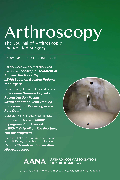
Lower rate of anterior knee discomfort with 4-strand hamstring versus patellar tendon in ACLR .
Outcome of Patellar Tendon Versus 4-Strand Hamstring Tendon Autografts for Anterior Cruciate Ligament Reconstruction: A Systematic Review and Meta-analysis of Prospective Randomized Trials.
Arthroscopy. 2017 Feb;33(2):450-46319 randomized controlled trials were included in this meta-analysis and systematic review comparing outcomes between four-strand hamstring tendon autografts and patellar tendon autografts at a minimum follow-up of 2-years after anterior cruciate ligament reconstruction. Pooled analyses demonstrated no significant differences between graft choices in re-rupture rate, objective and subjective tests of knee laxity/stability, and patient-reported functional measures. Outcomes which demonstrated a significant difference between grafts were the incidence of anterior knee discomfort and the incidence of discomfort during kneeling, both of which were significantly lower among groups which received the four-strand hamstring tendon autograft compared to patellar tendon autograft.
Unlock the Full ACE Report
You have access to 4 more FREE articles this month.
Click below to unlock and view this ACE Reports
Unlock Now
Critical appraisals of the latest, high-impact randomized controlled trials and systematic reviews in orthopaedics
Access to OrthoEvidence podcast content, including collaborations with the Journal of Bone and Joint Surgery, interviews with internationally recognized surgeons, and roundtable discussions on orthopaedic news and topics
Subscription to The Pulse, a twice-weekly evidence-based newsletter designed to help you make better clinical decisions
Exclusive access to original content articles, including in-house systematic reviews, and articles on health research methods and hot orthopaedic topics
































































